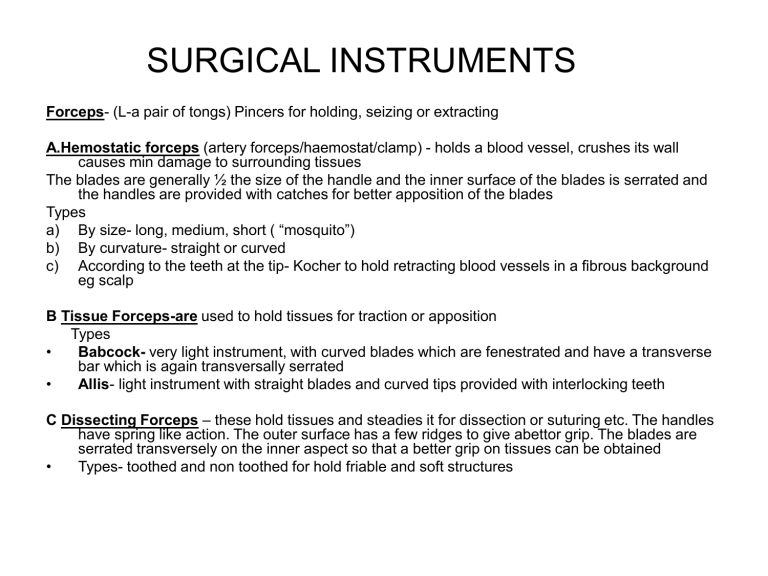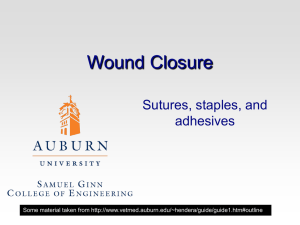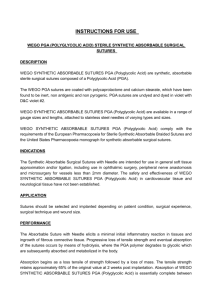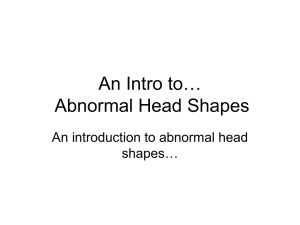SURGICAL INSTRUMENTS

SURGICAL INSTRUMENTS
Forceps - (L-a pair of tongs) Pincers for holding, seizing or extracting
A.Hemostatic forceps (artery forceps/haemostat/clamp) - holds a blood vessel, crushes its wall causes min damage to surrounding tissues
The blades are generally ½ the size of the handle and the inner surface of the blades is serrated and the handles are provided with catches for better apposition of the blades
Types a) By sizelong, medium, short ( “mosquito”) b) By curvature- straight or curved c) According to the teeth at the tip- Kocher to hold retracting blood vessels in a fibrous background eg scalp
B Tissue Forceps-are used to hold tissues for traction or apposition
Types
• Babcockvery light instrument, with curved blades which are fenestrated and have a transverse bar which is again transversally serrated
• Allis - light instrument with straight blades and curved tips provided with interlocking teeth
C Dissecting Forceps – these hold tissues and steadies it for dissection or suturing etc. The handles have spring like action. The outer surface has a few ridges to give abettor grip. The blades are serrated transversely on the inner aspect so that a better grip on tissues can be obtained
• Types- toothed and non toothed for hold friable and soft structures
SURGICAL INSTRUMENTS
NEEDLE HOLDERS
The needle holder have blades that are much smaller than hemostats- the fulcrum is closer to the tip so that greater force can be applied on the needle to prevent it from slipping. The inner surface of the blades are serrated in a criss-cross pattern and may have a groove for better accommodation and grip of the shaft of the needle There are catches on the handles
SCISSORS
TYPES- ACCORDING TO CURVATUREstraight, curved or angled
“ “ USE Dressing, stitch removal, tissue
“ “ the Tip - sharp or blunt
KNIVES
Interchangeable handles and blades
No 3 handle for # 15 blade
– for small incisions
And #11 blade – i& d of abscesses
N04 handle for #24 etc for larger incisions
RETRACTORS
SUTURES
Sutures bind tissues together
•
•
Ligatures or Ties obliterate the lumen of ductular tissues
Sutures are used to hold skin, internal organs, blood vessels and all other tissues together, after they have been severed by injury or surgery.
Sutures are designed to help the healing of the body by closely opposing the two sides of a wound to minimize scar formation or to prevent leaking blood, like in vessels. They have to comply with several requirements to be effective. They must be strong (so they do not break), non-toxic and hypoallergenic (to avoid adverse reactions in the body), and flexible (so they can be tied and knotted easily). In addition, they must lack the so called "wick effect", which means that sutures must not allow fluids to penetrate the body through them from outside, which could easily cause infections
TYPES
•
•
•
•
A Based on origin animal- catgut,,silk vegetable- cotton, linen synthetic - nylon, metal- stainless steel
B Whether the material is absorbable or not
Absorbable or Nonabsorbabl
ABSORBABLE SUTURES
Absorbable sutures are made of materials which are broken down in tissue after a given period of time, which depending on the suture can be from ten days to four weeks. They are used therefore in many of the inner tissues of the body. In most cases, three weeks is sufficient for the wound to close firmly. The suture is not needed any more, and the fact that it disappears is an advantage, as there is no foreign material left inside the body and no need for the patient to have the sutures removed.
Absorbable sutures were originally made of the intestines of sheep, the so called catgut. The manufacturing process was similar to that of natural musical strings for violins and guitars, and also of natural strings for tennis racquets. The inventor, a 10th century surgeon named al-Zahrawi reportedly discovered the dissolving nature of catgut when his lute's strings were eaten by a monkey. Today, gut sutures are made of specially prepared beef and sheep intestine, and may be untreated (plain gut), tanned with chromium salts to increase their persistence in the body (chromic gut). However, the major part of the absorbable sutures used are now made of synthetic polymer fibers, which may be braided or monofilament; these offer numerous advantages over gut sutures, notably ease of handling, low cost, low tissue reaction, consistent performance and guaranteed non-toxicity. (In
Europe and Japan, gut sutures have been banned due to concerns over bovine spongiform encephalopathy, although the herds from which gut is harvested are certified BSE-free.) Each major suture manufacturer has its own proprietary formulations for its brands of synthetic absorbable sutures; various blends of poly
NONABSORBABLE SUTURES
Nonabsorbable sutures are made of materials which are not metabolized by the body, and are used therefore either on skin wound closure, where the sutures can be removed after a few weeks, or in some inner tissues in which absorbable sutures are not adequate. This is the case, for example, in the heart and in blood vessels, whose rhythmic movement requires a suture which stays longer than three weeks, to give the wound enough time to close. or tendons which take a long time to heal because of its poor blood supply.
There are several materials used for nonabsorbable sutures. The most common is a natural fiber, silk, which undergoes a special manufacturing process to make it adequate for its use in surgery.
Other nonabsorbable sutures are made of artificial fibers, like polypropylene, polyester or nylon; these may or may not have coatings to enhance their performance characteristics. Finally, stainless steel wires are used in orthopedic surgery and for sternal closure in cardiac surgery.
Absorbable Sutures
Brand Name Name
Plain Catgut ---
Chromic Catgut ---
Poliglecaprone 25
Polyglactin 910
Polyglycolic acid
Polydioxanone
Monocryl
Vicryl
Dexon
PDS II
NONABSORBABLE SUTURES
Name Brand Name
Silk
Braided Polyester Ethibond, Tevdek
Stainless Steel Wire ---
Polypropylene
Nylon---
Prolene
Ethibond
SUTURING A LACERATION
NEEDLES
Traumatic and atraumatic needles with sutures
Traumatic needles with sutures are those which are supplied to the hospital plain, i.e., the manufacturer supplies the suture thread and the eyed needle to use the suture as separate items. The suture must be threaded as it is done when sewing at home.
Atraumatic needles with sutures include an eyeless needle attached to a specific length of suture thread. The suture manufacturer swages the suture thread to the eyeless atraumatic needle at the factory. There are several advantages to having the needle pre-mounted on the sutre. The doctor or the nurse do not have to spend time threading the suture on the needle. More importantly, the suture thread which is swaged using a hole at the end of the needle is smaller in size than the needle body.
In traumatic needle with suture, the thread comes out of the needle's hole or eye on both sides. When passing through the tissues, this type of suture rips the tissue to a certain extent. With the atraumatic needle with suture this does not happen. They produce no trauma to the tissue, hence the name "atraumatic". Because of these advantages, nearly all modern sutures feature swaged atraumatic needles.
There are several shapes of atraumatic needles , including straight, half circle, fiveeighths and one-quarter. Needles may also be classified by their point geometry ; examples include taper (needle body is round and tapers smoothly to a point), cutting
(needle body is triangular and has a sharpened cutting edge on the inside), reverse cutting (cutting edge on the outside), and "trocar point" or "tapercut" (needle body is round and tapered, but ends in a small triangular cutting point)..
Finally, atraumatic needles may be permanently swaged to the suture or may be designed to come off the suture with a sharp straight tug. These "pop-offs" are commonly used for interrupted sutures, where each suture is only passed once and then tied.
Tissue adhesives
In recent years, topical cyanoacrylate adhesives ("liquid stitches") have been used in combination with, or as an alternative to, sutures in wound closure. The adhesive remains liquid until exposed to water or water-containing substances/tissue, after which it cures
(polymerizes) and forms a flexible film that bonds to the underlying surface. The tissue adhesive has been shown to act as a barrier to microbial penetration as long as the adhesive film remains intact.
Antimicrobial sutures
Another recent development in wound closure involves the use of sutures coated with antimicrobial substances to reduce the chances of wound infection. While long-term studies are not yet available, preliminary results indicate that these sutures are effective at keeping bacteria out of wounds.






